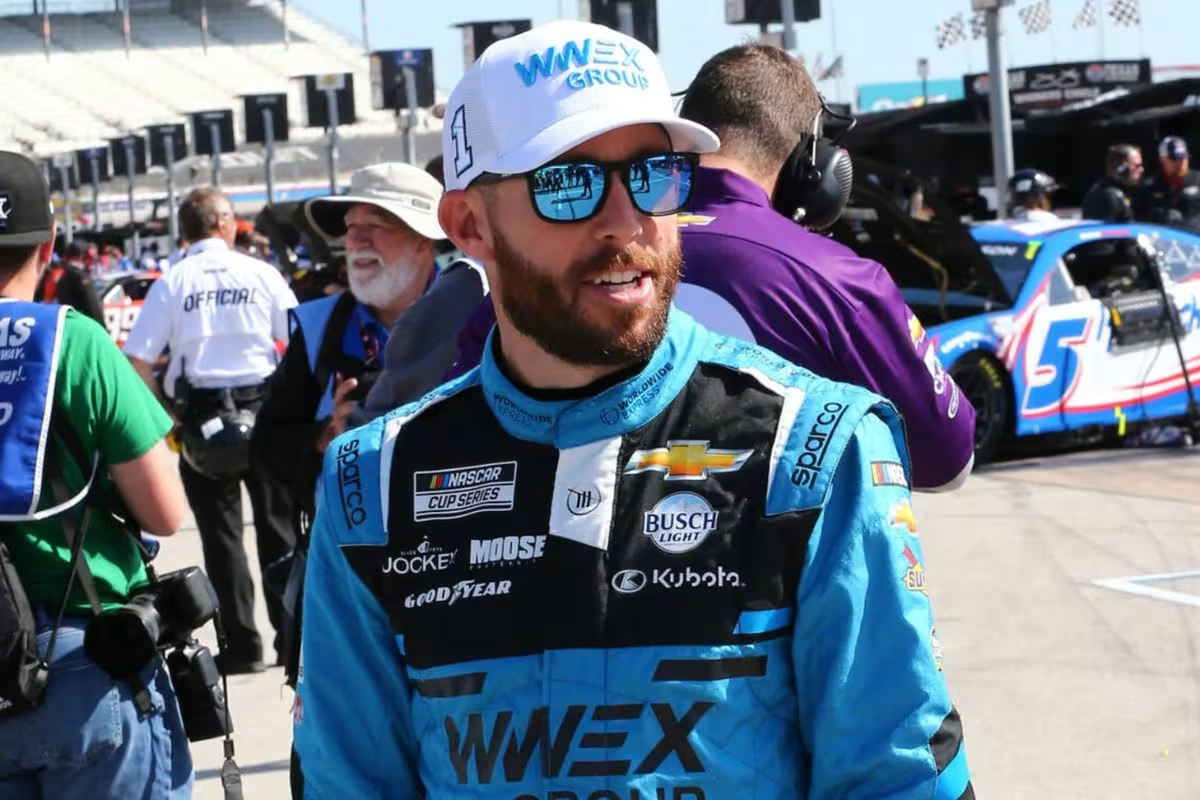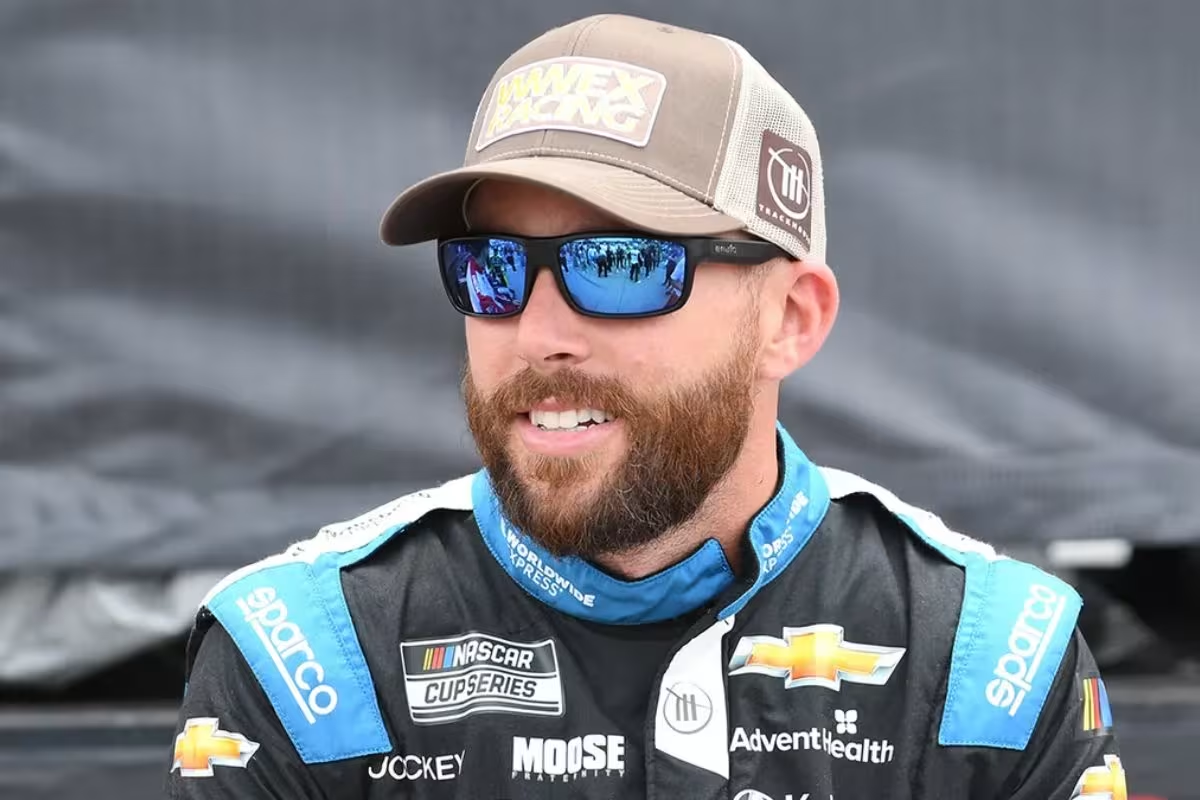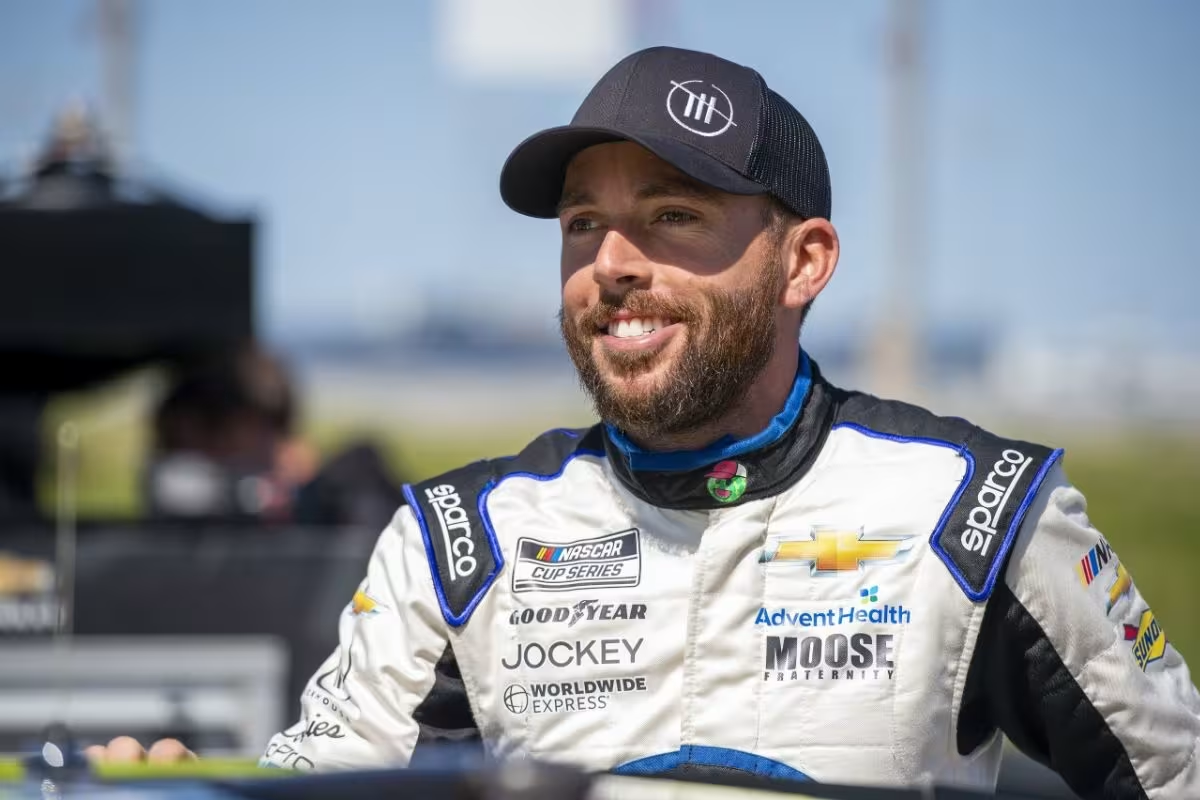Ross Chastain’s Crash Shocks NASCAR: Ross Chastain’s harrowing crash at the Yellawood 500 has sparked a crucial conversation about NASCAR’s safety equipment, specifically the Head and Neck Support (HANS) device. While the driver walked away with minimal injuries, the incident raises important questions about the effectiveness and reliability of current safety measures, particularly at superspeedway races. As NASCAR evolves, so too must the safety technology that protects its drivers, and Chastain’s crash could be a catalyst for this much-needed reassessment.
Key Highlights
- Ross Chastain’s crash during the Yellawood 500 raises serious concerns about the reliability of NASCAR’s safety equipment, particularly the HANS device.
- The incident shows the unpredictable nature of superspeedway racing, highlighting the inherent risks faced by drivers.
- Media scrutiny can amplify pressure on drivers, but Chastain found relief in reduced focus after missing the playoffs.
- Fan reactions reveal a skepticism about the effectiveness of current safety measures, prompting calls for transparency and improvement.
- Chastain’s experience emphasizes the urgent need for ongoing innovation in NASCAR safety protocols to better protect drivers.
Ross Chastain’s Incident at Talladega
In NASCAR, where split-second decisions can dictate the outcome of a race, Ross Chastain’s recent incident at Talladega Superspeedway serves as a clear reminder of the inherent dangers in the sport.
During the Yellawood 500, an unexpected chain reaction culminated in a notable crash, altering the path of Chastain’s race. As stage two approached its finale, reigning Cup Series champion Ryan Blaney was inadvertently shoved from behind by Alex Bowman. This pivotal moment catapulted Blaney’s Ford directly into Chastain’s Chevrolet, resulting in a collision that demonstrated the unpredictable nature of superspeedway racing.
Chastain, a formidable competitor who has secured twelve wins across different NASCAR divisions and five victories in the Cup Series, found his chance for success abruptly halted. His recent victory in the Hollywood Casino 400 at Kansas Speedway had amplified expectations, making the incident at Talladega particularly disheartening.
The crash not only ended his race but also raised critical questions about safety protocols and the mechanisms in place to protect drivers during high-speed events.
Chastain’s Harrowing Experience Post-Crash
The aftermath of Ross Chastain’s crash at Talladega revealed a disconcerting reality about the safety equipment designed to protect drivers in high-speed environments. Notable among these was the HANS (Head and Neck Safety) device, which Chastain disclosed had broken during the incident. This revelation raises vital questions regarding the reliability and durability of safety innovations that have become staples in motorsport.
The HANS device was introduced in NASCAR following the tragic death of Dale Earnhardt in 2001, serving as a significant advancement aimed at preventing catastrophic head and neck injuries. It stabilizes a driver’s head during collisions, but Chastain’s experience highlights the potential for failure even in well-established safety gear.
Despite emerging from the wreckage engulfed in flames and with a compromised HANS device, Chastain was remarkably released from the infield care center without serious injury. This outcome, while fortunate, draws attention to the inherent risks drivers face and the limitations of current safety measures.
The incident prompts a deeper analysis of the evolution of NASCAR safety protocols. As advancements are made, the need for rigorous testing and evaluation of safety equipment becomes paramount.
Chastain’s Perspective on Media Attention
Media attention in NASCAR can be a double-edged sword, often amplifying both triumphs and tribulations. For Ross Chastain, the recent shift away from the limelight following his playoff miss has been surprisingly liberating. Despite finishing last in the Yellawood 500, Chastain’s performance in the playoff races, securing three top-ten finishes, showcased his competitive edge.
In an unexpected turn, Chastain relished the lack of media personnel trailing him post-race, especially after his victory at the Hollywood Casino 400. His comments reveal a nuanced understanding of fame and its pressures.
Chastain noted, “I’ve never been so happy to watch y’all walk by everybody in this room,” emphasizing his relief at not being the center of attention. This perspective reflects a growing sentiment among drivers who crave authenticity during the spectacle of NASCAR.
“I’ve never been so happy to watch y’all walk by, everybody in this room. I’ve never been so happy to watch Netflix walk the other way when I get there. Like, the boom mics are going that way. They’re following Daniel Suarez. They’re talking to Justin Marks, but none of it’s about me.”
“To be honest, I love it. I’m all for it. I’m the first one to sign up for Netflix. I’m the first one to sign up for interviews, but when they go the other way, I love it.” – Chastain
Chastain’s ability to focus on his performance without the distractions of media examination allows him to hone his skills and strategies effectively. His enjoyment of relative anonymity serves as a reminder of the balance drivers must strike between public persona and personal focus.
Fan Reactions to the HANS Device Incident
Safety remains a paramount concern in NASCAR, particularly following incidents that raise questions about the effectiveness of protective equipment like the HANS device. Recent reactions from fans highlight a blend of concern and curiosity regarding the implications of Ross Chastain’s crash. While many recognize the necessity of such safety devices, questions about their reliability and evolution since their inception have become prominent.
“Honestly I started fearing the worst, seemed like it was taking longer than normal for the net to come down and a lotta smoke coming from the engine bay. Hard hard hit.”
“Isn’t it supposed to do that (in a worst case scenario)? Like it takes all the energy and then breaks instead of you taking all the energy and breaking. Sort of like a helmet is supposed to be the thing that cracks and not your head? It’s not supposed to be reusable after a crash (I actually don’t know if they’re allowed to reuse them at all).”- fans reaction
Fans have expressed a desire for transparency from NASCAR regarding research and development efforts surrounding the HANS device. As safety technology continuously advances, it is essential that the NASCAR community remains vigilant in questioning and addressing potential vulnerabilities.
“I’m not an expert on these safety devices by any means, but I feel like the HANS Device cracking from a crash is really not good.” -fans’ reaction
The significant dialogue initiated by fans following Chastain’s incident emphasizes the need for ongoing improvement in safety protocols and equipment, ensuring that the integrity of driver safety remains uncompromised as the sport evolves.
News in Brief: Ross Chastain’s Crash Shocks NASCAR
The incident involving Ross Chastain serves as a vital reminder of the inherent risks associated with superspeedway racing and the limitations of existing safety equipment, particularly the HANS device. While Chastain emerged largely unscathed, the event highlights the pressing need for NASCAR to prioritize improvements in driver safety technology.
Continuous innovation and rigorous testing are fundamental to guarantee the well-being of competitors, thereby reinforcing the sport’s commitment to safeguarding its athletes against the unpredictable nature of high-speed racing.
ALSO READ: Ross Chastain’s Life Before NASCAR: What You Didn’t Know About His Journey!




